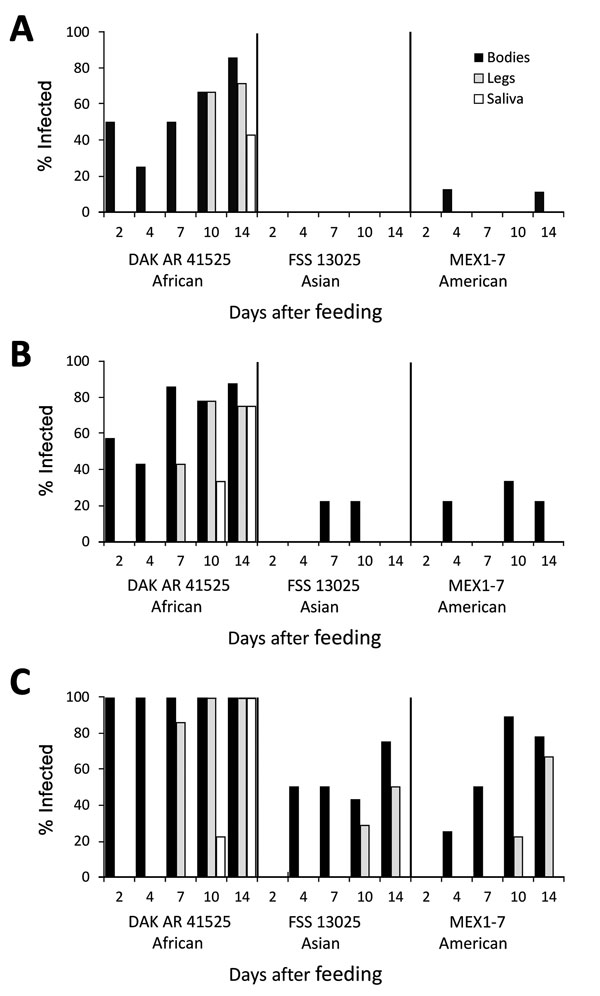Volume 23, Number 4—April 2017
Research
Variation in Aedes aegypti Mosquito Competence for Zika Virus Transmission
Figure 1

Figure 1. Infection, dissemination, and transmission of 3 Zika virus strains by Aedes aegypti mosquitoes from Salvador, Brazil, after artificial blood meals with a concentration of 4 log10 (A), 5 log10 (B), or 6 log10 (C) focus-forming units/mL.
1These authors contributed equally to this article.
Page created: March 16, 2017
Page updated: March 16, 2017
Page reviewed: March 16, 2017
The conclusions, findings, and opinions expressed by authors contributing to this journal do not necessarily reflect the official position of the U.S. Department of Health and Human Services, the Public Health Service, the Centers for Disease Control and Prevention, or the authors' affiliated institutions. Use of trade names is for identification only and does not imply endorsement by any of the groups named above.